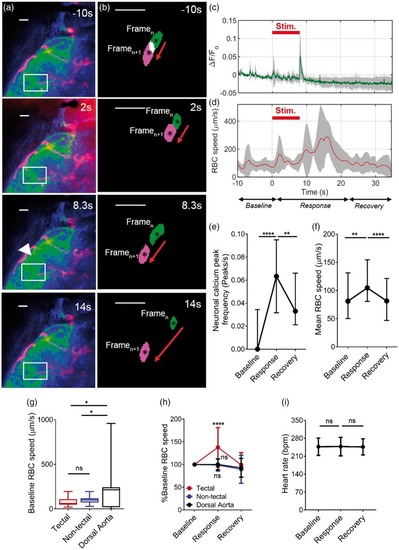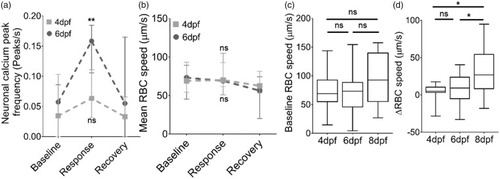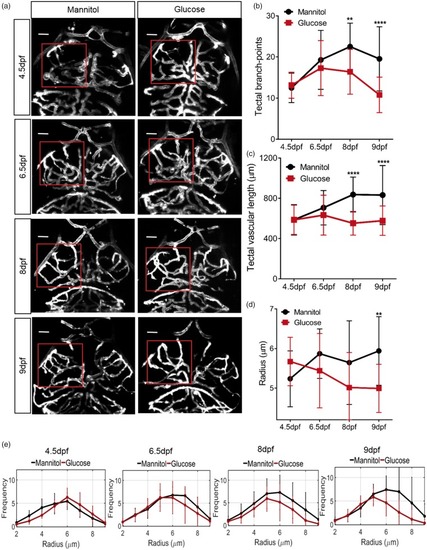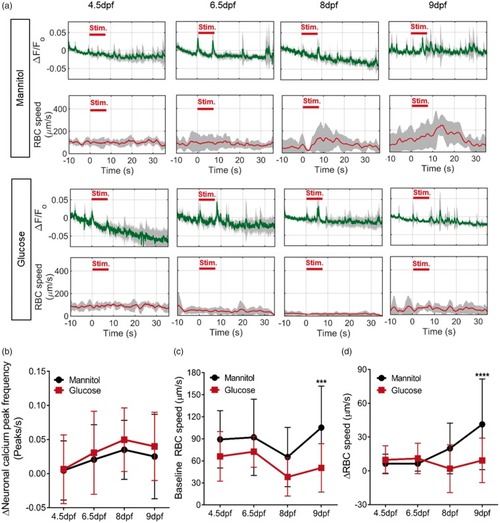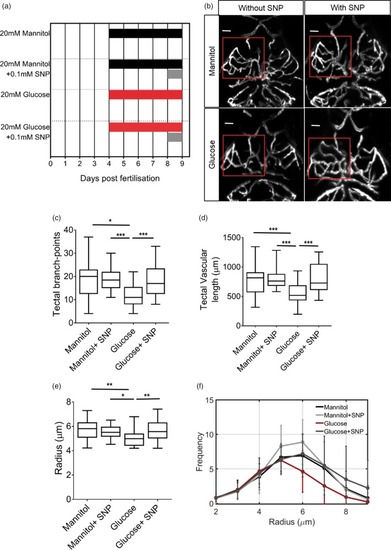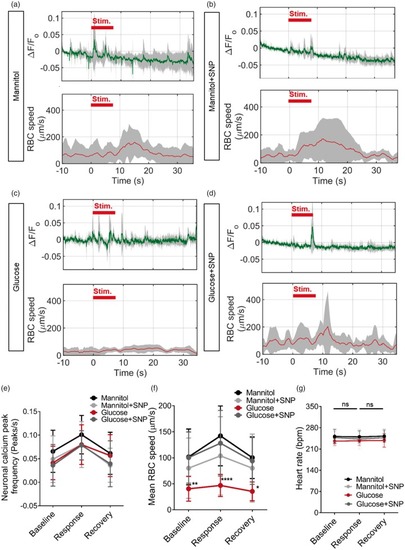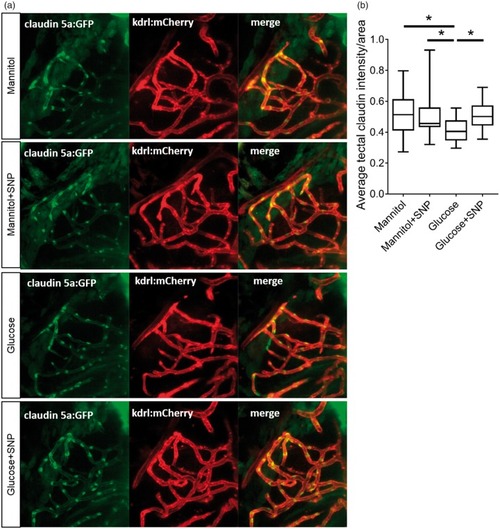- Title
-
The effect of hyperglycemia on neurovascular coupling and cerebrovascular patterning in zebrafish
- Authors
- Chhabria, K., Plant, K., Bandmann, O., Wilkinson, R.N., Martin, C., Kugler, E., Armitage, P.A., Santoscoy, P.L., Cunliffe, V.T., Huisken, J., McGown, A., Ramesh, T., Chico, T.J., Howarth, C.
- Source
- Full text @ J. Cereb. Blood Flow Metab.
|
8 dpf zebrafish larvae display neurovascular coupling. (a) The left optic tectum of an 8 dpf |
|
Neurovascular coupling in zebrafish develops after 6 dpf. (a) Quantification of frequency of peaks in ( |
|
Effect of glucose exposure on cerebrovascular patterning in zebrafish. (a) Representative micrographs of cerebral vessels exposed to 20 mM mannitol or glucose from 4 dpf for 12 h, 60 h, 96 h and 120 h. Square indicates region of left optic tectum quantified in (b)–(e). (b) Number of tectal vessel branchpoints ( PHENOTYPE:
|
|
Effect of glucose exposure on neurovascular function in zebrafish. (a) Time series of neuronal activation ( PHENOTYPE:
|
|
Sodium nitroprusside reverses the effect of glucose exposure on cerebrovascular patterning. (a) Gannt chart indicating treatment groups and duration of drugs exposures for experiments in PHENOTYPE:
|
|
Sodium nitroprusside reverses the effect of glucose on neurovascular coupling. (a)–(d) Time series of neuronal activation ( PHENOTYPE:
|
|
|

